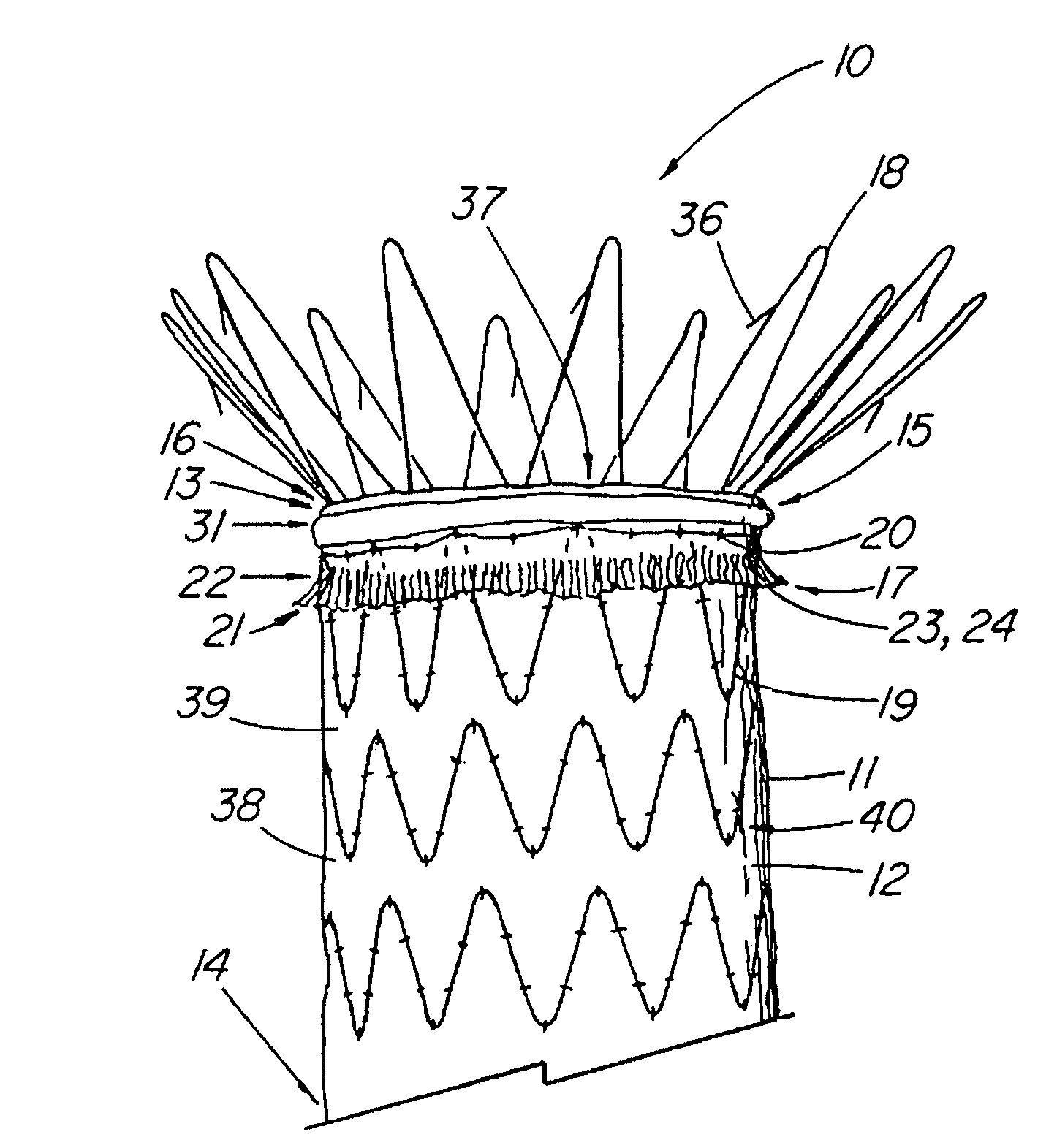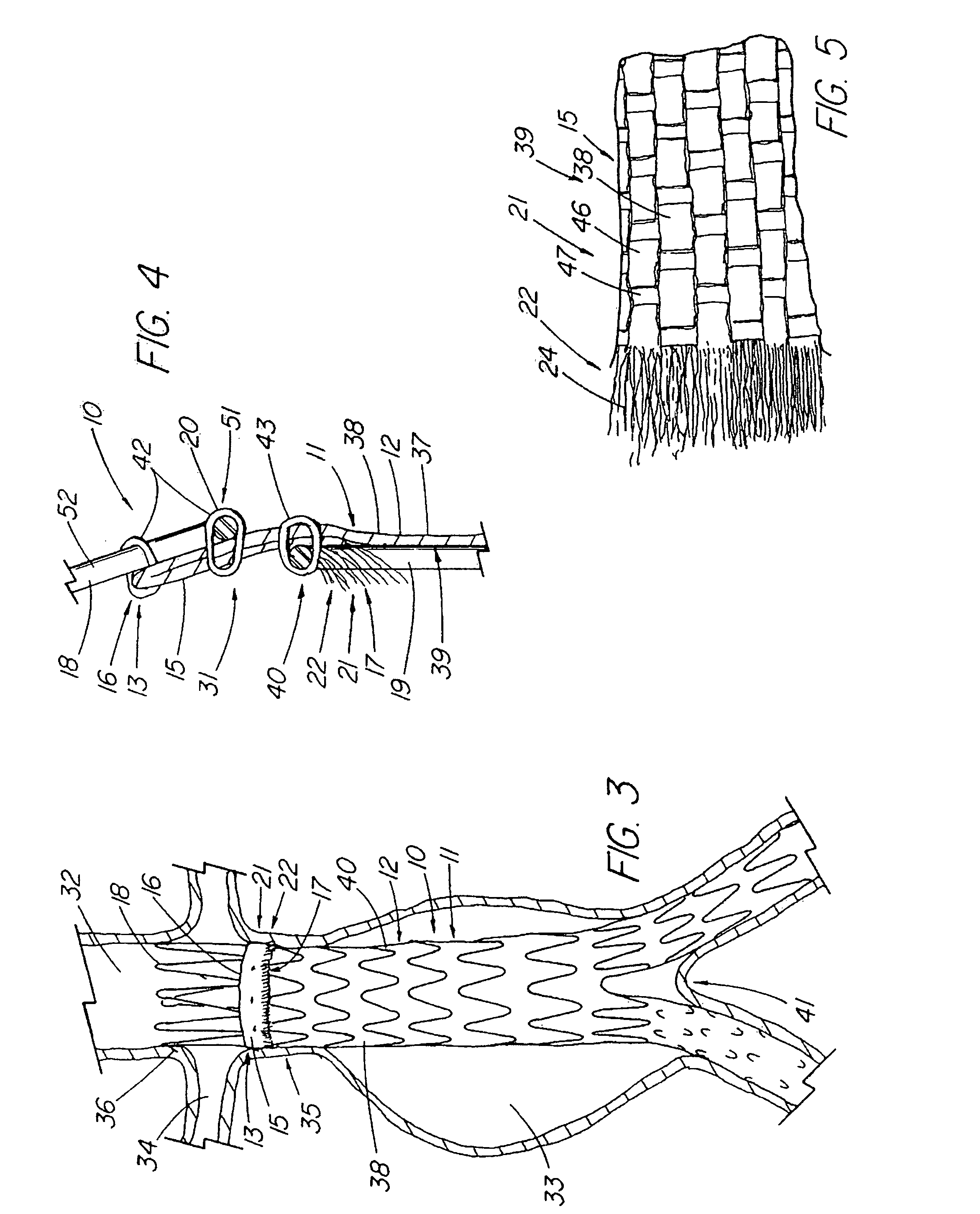Endoluminal device with extracellular matrix material and methods
a technology of extracellular matrix and endoluminal device, which is applied in the field of medical devices, can solve the problems of increasing frictional forces, weakening or even tearing of blood vessels and ducts, and functional vessels of human and animal bodies, and achieves the effect of reducing the endoleakage of endoluminal devi
- Summary
- Abstract
- Description
- Claims
- Application Information
AI Technical Summary
Benefits of technology
Problems solved by technology
Method used
Image
Examples
example 1
[0226]Thirty feet of whole intestine from a mature adult hog is rinsed with water. This material is then treated in a 0.2% by volume peracetic acid in a 5% by volume aqueous ethanol solution for a period of two hours with agitation. The tela submucosa layer is then delaminated in a disinfected casing machine from the whole intestine. The delaminated tela submucosa is rinsed four (4) times with sterile water and tested for impurities or contaminants such as endotoxins, microbial organisms, and pyrogens. The resultant tissue was found to have essentially zero bioburden level. The tela submucosa layer separated easily and consistently from the whole intestine and was found to have minimal tissue debris on its surface.
example 2
[0227]A ten foot section of porcine whole intestine is washed with water. After rinsing, this section of tela submucosa intestinal source material is treated for about two and a half hours in 0.2% peracetic acid by volume in a 5% by volume aqueous ethanol solution with agitation. Following the treatment with peracetic acid, the tela submucosa layer is delaminated from the whole intestine. The resultant tela submucosa is then rinsed four (4) times with sterile water. The bioburden was found to be essentially zero.
example 3
[0228]A small section of the tela submucosa intestinal material was subcutaneously implanted in a rat. Within 72 hours, significant angiogenesis was observed.
PUM
 Login to View More
Login to View More Abstract
Description
Claims
Application Information
 Login to View More
Login to View More - R&D
- Intellectual Property
- Life Sciences
- Materials
- Tech Scout
- Unparalleled Data Quality
- Higher Quality Content
- 60% Fewer Hallucinations
Browse by: Latest US Patents, China's latest patents, Technical Efficacy Thesaurus, Application Domain, Technology Topic, Popular Technical Reports.
© 2025 PatSnap. All rights reserved.Legal|Privacy policy|Modern Slavery Act Transparency Statement|Sitemap|About US| Contact US: help@patsnap.com



